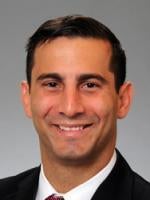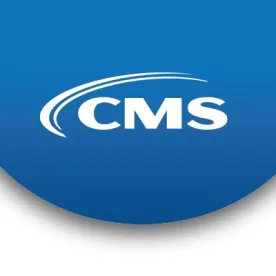The Centers for Medicare & Medicaid Services (CMS) has proposed a new category of digital health services—Remote Therapeutic Monitoring (RTM)—to complement the existing suite of Remote Physiological Monitoring (RPM) codes covered under Medicare. The new codes, part of the proposed 2022 Physician Fee Schedule, are intended to expand the scope and reach of digital health technologies to reimburse monitoring of non-physiologic data.
The creation of new RPM codes at the beginning of 2019 was a major step forward in digital health coverage to improve care delivery, outcomes, and cost management. Since that time, the American Medical Association’s (AMA) Digital Medicine Payment Advisory Group has developed, and CMS adopted, additional codes for remote monitoring services. The recent RTM proposal recognizes the benefit of remote monitoring and continues to foster the use of digital health tools to give clinicians a more comprehensive data set of their patients’ health conditions.
What is Remote Therapeutic Monitoring?
RTM refers to a suite of codes created by the AMA in October 2020 and valued by its RVS Update Committee in January 2021. The codes are currently numbered as CPT 989X1, 989X2, 989X3, 989X4, and 989X5. The structure and nature of RTM services resemble RPM services. (Read more about RPM rules here and here).
The RTM code descriptions are as follows:
-
CPT code 989X1 (Remote therapeutic monitoring (e.g., respiratory system status, musculoskeletal system status, therapy adherence, therapy response); initial set-up and patient education on use of equipment)
-
CPT code 989X2 (Remote therapeutic monitoring (e.g., respiratory system status, musculoskeletal system status, therapy adherence, therapy response); device(s) supply with scheduled (e.g., daily) recording(s) and/or programmed alert(s) transmission to monitor respiratory system, each 30 days)
-
CPT code 989X3 (Remote therapeutic monitoring (e.g., respiratory system status, musculoskeletal system status, therapy adherence, therapy response); device(s) supply with scheduled (e.g., daily) recording(s) and/or programmed alert(s) transmission to monitor musculoskeletal system, each 30 days)
-
CPT code 989X4 (Remote therapeutic monitoring treatment management services, physician/ other qualified health care professional time in a calendar month requiring at least one interactive communication with the patient/caregiver during the calendar month; first 20 minutes)
-
CPT code 989X5 (Remote therapeutic monitoring treatment management services, physician/other qualified health care professional time in a calendar month requiring at least one interactive communication with the patient/caregiver during the calendar month; each additional 20 minutes (List separately in addition to code for primary procedure))
How Does RTM Differ from RPM?
While there are similarities between the RPM and RTM codes, CMS identified some key differences in the nature of the data collected, how the data is collected, and which clinicians are eligible to bill for RTM services.
The first difference is the nature of the data to be collected. RTM codes monitor health conditions including, but not limited to, musculoskeletal system status, respiratory system status, therapy adherence, and therapy response, and as such, allow non-physiologic data to be collected. Compared to RPM, the RTM codes offer the promise of broader use cases and applications in patient care. The list of RTM health conditions identified in the code descriptors is meant to be illustrative and not exhaustive (hence the use of “e.g.”). In the proposed PFS rule, CMS added the word “(medication)” – “therapy (medication) adherence, and therapy (medication) response” – but that word is not contained in the CPT code descriptors. It is unclear what AMA or RUC materials CMS relied upon when inserting the word ‘medication’ in its PFS commentary.
Here’s a hypothetical example of how RTM might potentially be used under the proposed rule:
An asthmatic patient is prescribed a rescue inhaler equipped with an FDA-approved medical device that monitors when the patient uses the inhaler, how many times during the day the patient uses the inhaler, how many puffs/doses the patient uses each time, and the pollen count and environmental factors that exist in the patient’s location at that time. This is non-physiologic data. The data is then used by the treating practitioner to assess the patient’s therapeutic response and adherence to the asthma treatment plan. This can enable the practitioner to better determine how well the patient is responding to the particular medication, what social or environmental factors affect the patient’s respiratory system status, and what changes could be made to improve the patient’s health.
A second difference is what clinical use cases are eligible for device supply reimbursement under RTM. The two RTM device supply codes (989X2, 989X3) are similar to the RPM device supply code (99454), but not identical. CPT code 99454 does not restrict the clinical or biological systems being monitored, although the data must be physiological. In contrast, the two RTM device supply code descriptors themselves indicate far more limited clinical use cases. Namely, 989X2 is only for transmissions to monitor respiratory system, whereas 989X3 is only for transmissions to monitor musculoskeletal system. The current RTM device supply codes do not target other systems (e.g., neurological, vascular, endocrine, digestive, etc.).
A third difference is how the device collects data. Both RTM and RPM require the use of a medical device. However, according to CMS’ commentary, RTM data can be self-reported by the patient, as well as digitally uploaded via the device. In contrast, RPM requires the device to digitally (that is, automatically) record and upload patient physiologic data (i.e., data cannot be patient self-recorded, self-reported, or entered manually into the device). It is unclear what AMA or RUC materials CMS relied upon when determining the RTM codes allow a patient to self-report the data, particularly as that interpretation does not mirror RPM device requirements.
A fourth difference is which clinicians can order and bill for RTM services. Based on its review of the AMA documents, CMS opined the primary billers of RTM were intended to be nurses and physical therapists. The idea being the new RTM codes would allow practitioners who cannot bill RPM codes to furnish and bill for services that look similar to those of RPM. (RPM is an E/M service and physical therapists cannot bill E/M services.) The RTM codes, accordingly, are classified as general medicine codes and not E/M codes. However, CMS’ proposed rule notes certain inconsistencies, described below:
-
CMS stated, “[b]y modeling the new RTM codes on the RPM codes, ‘incident to’ services became part of the [RTM codes] ... as a result, the RTM codes as constructed currently cannot be billed by, for example, physical therapists.” It is unclear what CMS meant by “became part of” or whether CMS intended to impose a blanket prohibition on a physical therapist’s ability to provide RTM. Only physicians and certain practitioners (but not physical therapists) are authorized to furnish and bill “incident to” services. Yet, nothing in the RTM code descriptors mandates the use of “incident to” billing. What about a physical therapist that wants personally furnish RTM and not use “incident to” billing? This is an area for stakeholders to comment on and for CMS to respond in the final rule, as additional clarity is essential for practitioners to confidently begin using these codes.
-
In prior years, CMS designated the two RPM treatment management codes (CPT codes 99457 and 99458) as care management services, to allow general supervision for “incident to” billing. In contrast, because the two RTM treatment management codes (CPT codes 989X4 and 989X5) are not E/M codes, they cannot be designated as care management services. This means a physician could not order and bill for RTM services while having remote-based non-physician practitioners perform the work under general supervision. CMS is seeking public comments on how it can solve for this, so it can be addressed in the forthcoming final PFS rule later this year.
-
The RPM code descriptors include the term “clinical staff,” whereas the RTM code descriptors do not. Does this omission mean clinical staff are not allowed to assist in delivering the RTM service? This question is not answered in CMS’ commentary, and deserves stakeholder input and CMS’ attention before the final PFS rule is issued.
Call to Action
Providers, technology companies, and virtual care entrepreneurs interested in RPM should consider providing comments to the proposed rule. CMS is soliciting comments on the proposed rule until 5:00 p.m. on September 13, 2021. Anyone may submit comments—anonymously or otherwise—via electronic submission at this link. When commenting, refer to file code CMS-1751-P in your submission. Alternatively, commenters may submit comments by mail to:
-
Regular Mail: Centers for Medicare & Medicaid Services, Department of Health and Human Services, Attention: CMS-1751-P, P.O. Box 8016, Baltimore, MD 21244-8016.
-
Express Overnight Mail: Centers for Medicare & Medicaid Services, Department of Health and Human Services, Attention: CMS-1751-P, Mail Stop C4-26-05, 7500 Security Boulevard, Baltimore, MD 21244-1850
If submitting via mail, please be sure to allow time for comments to be received before the closing date.
Conclusion
The CMS proposed rule advances the ability of clinicians to use remote monitoring technologies to improve the patient care experience, but the technical details still need to be ironed out. We will continue to monitor CMS for any rule changes or guidance that affect or improve RPM (and now RTM) opportunities.





 />i
/>i
